The Shape of Paper to Come
In elaborate collages and installations, paper can generate elements that are capable of building new worlds.
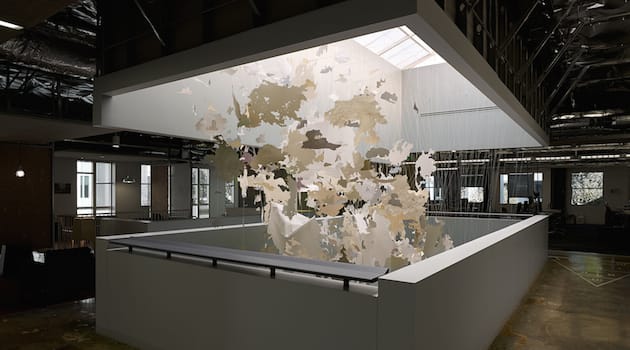
Interview by Rosecrans Baldwin
The Morning News: How do you describe your relationship with paper?
Val Britton: I have a close relationship with paper. I studied printmaking for many years. It’s an incredibly strong, versatile material, and I find endless possibilities in working with it. It inspires me. Continue reading ↓
“Val Britton: Passage” was recently on view at Gallery Wendi Norris, San Franicsco. All images used with permission, copyright © the artist, all rights reserved.
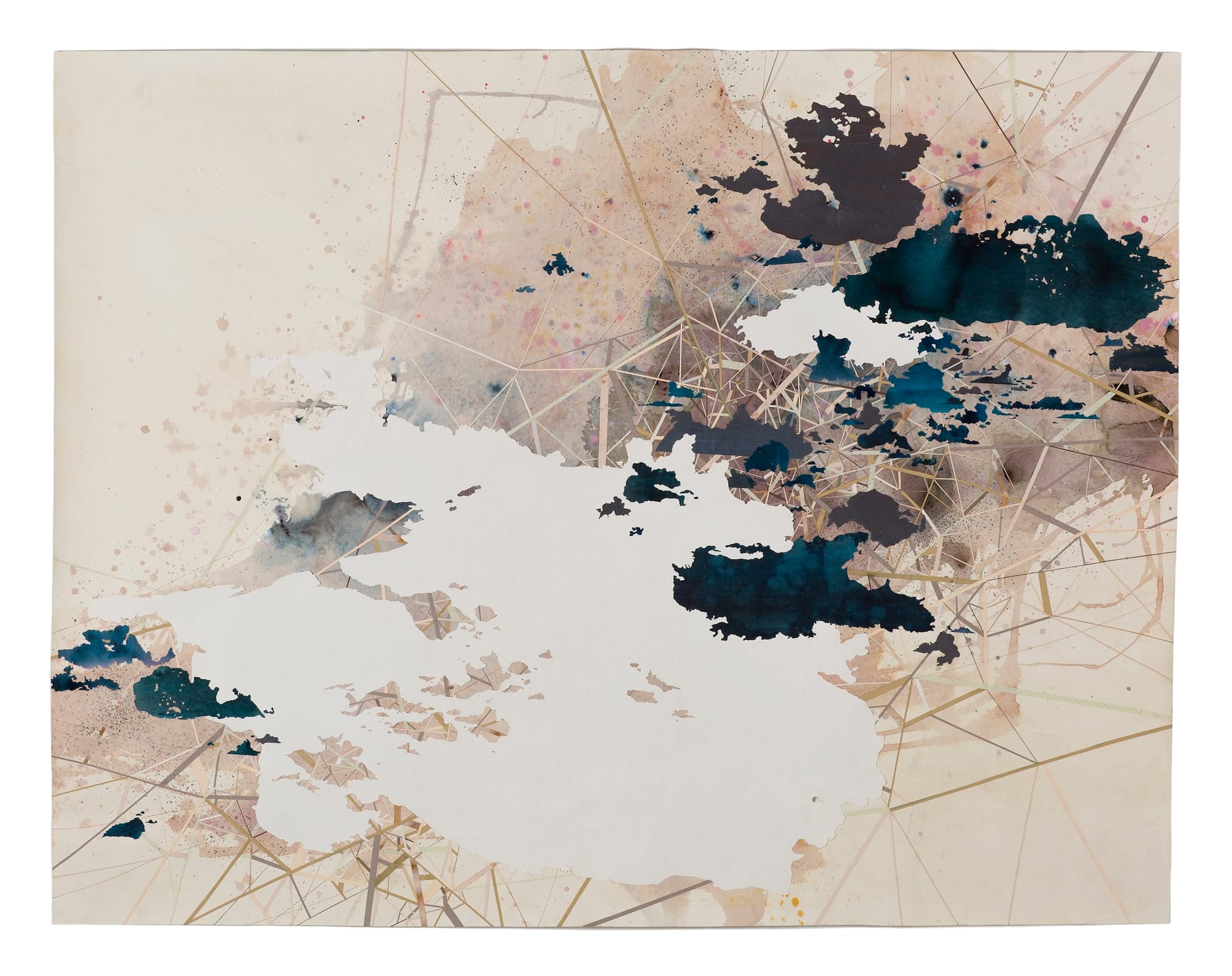
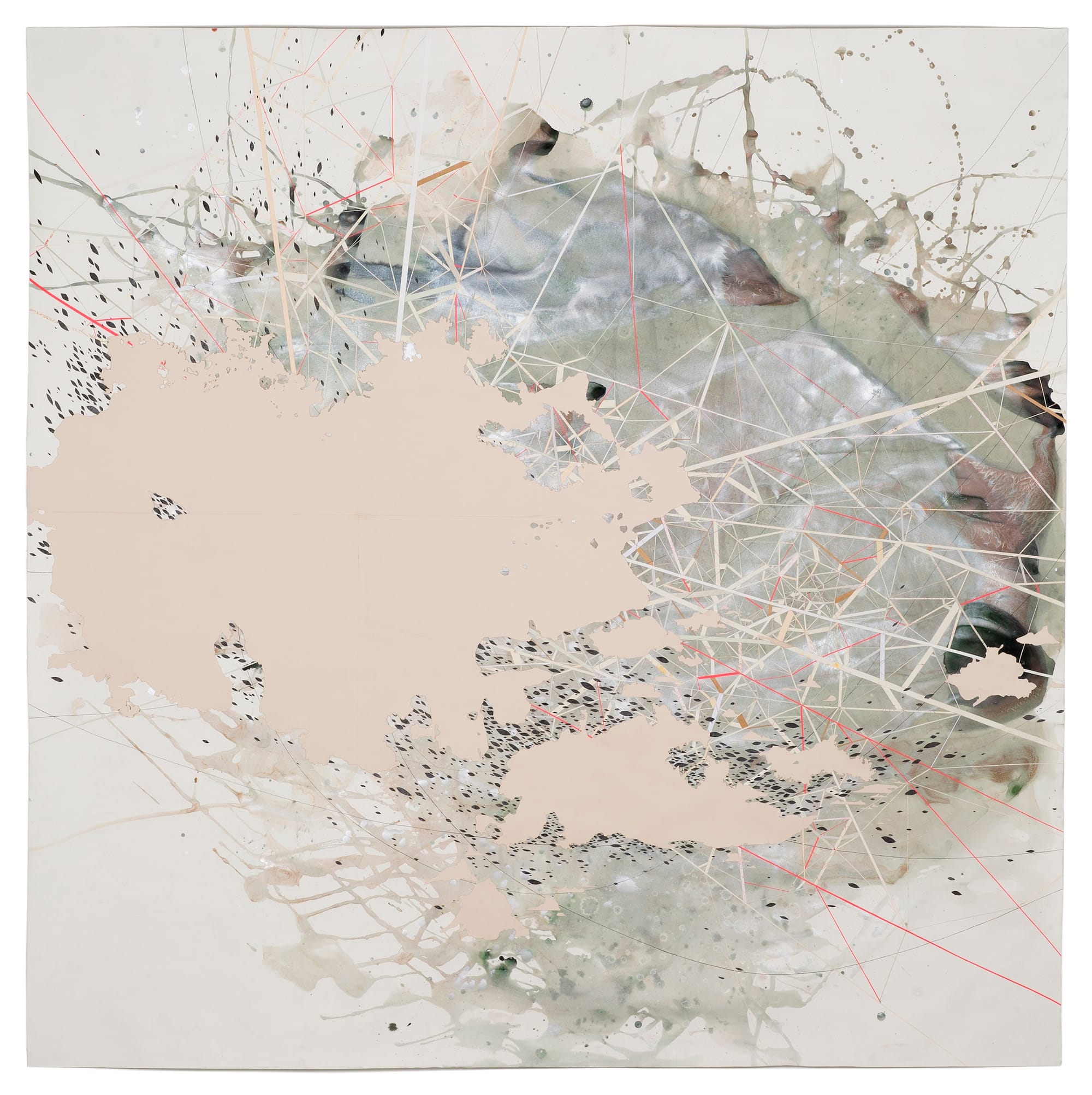
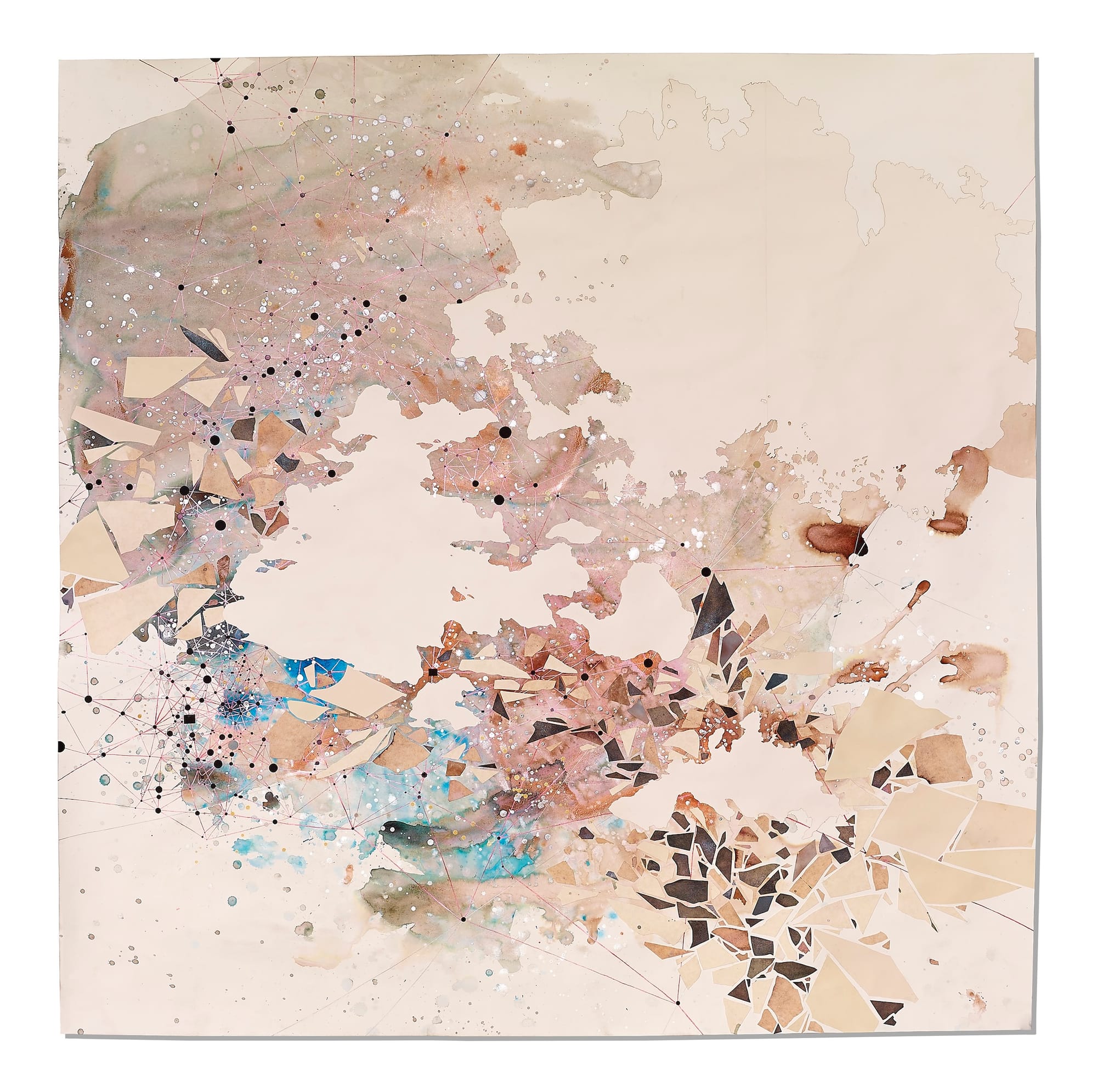
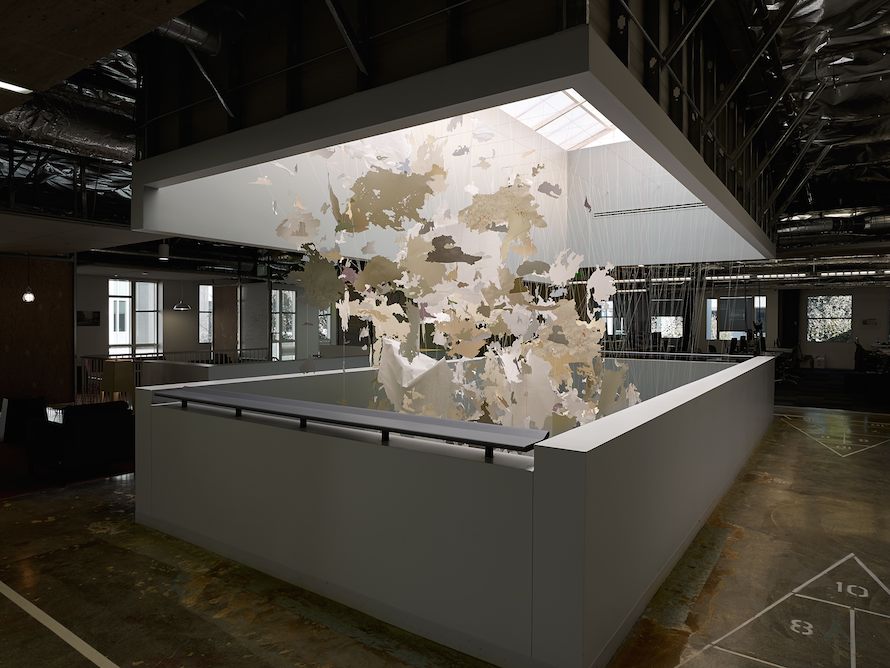
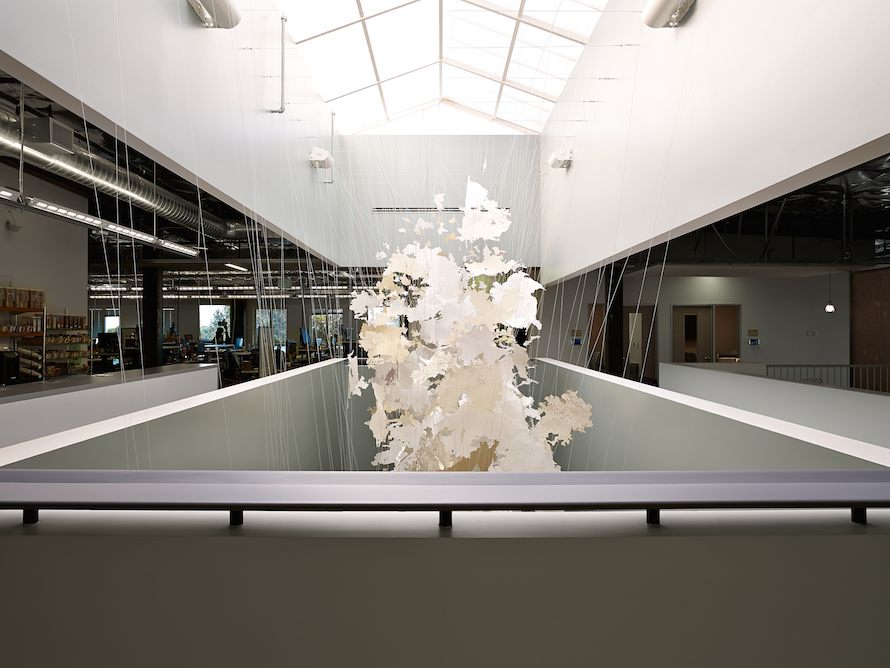
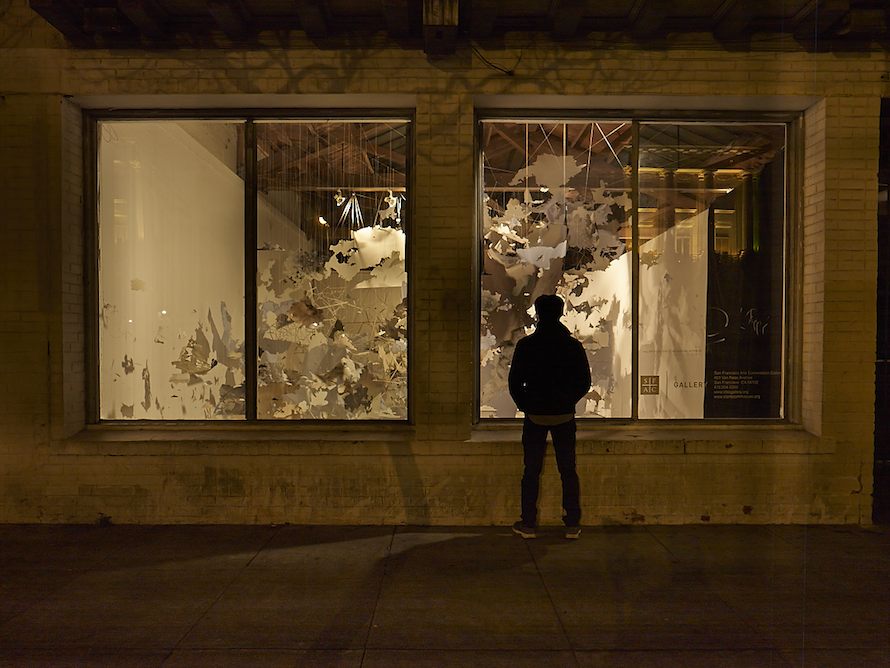
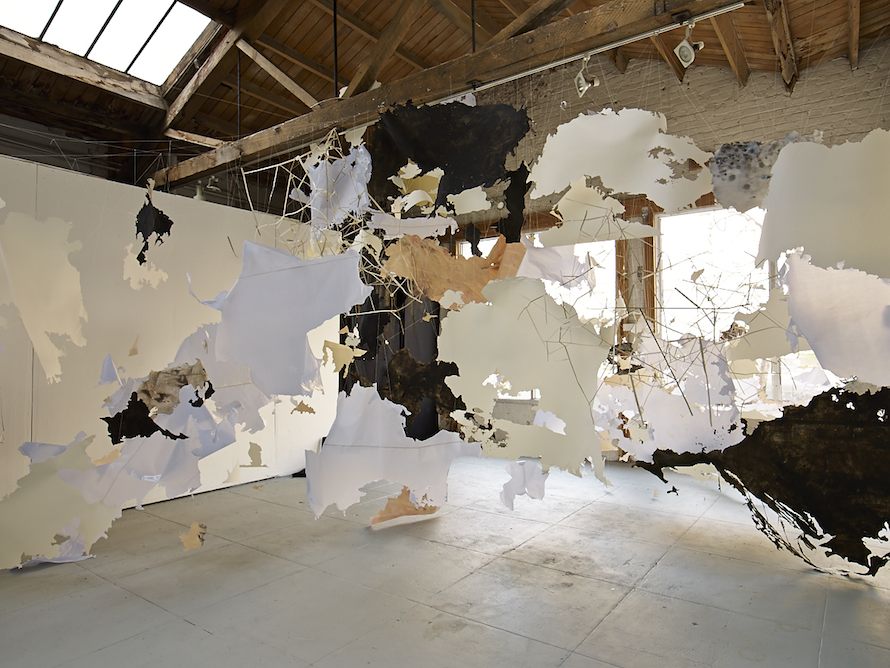
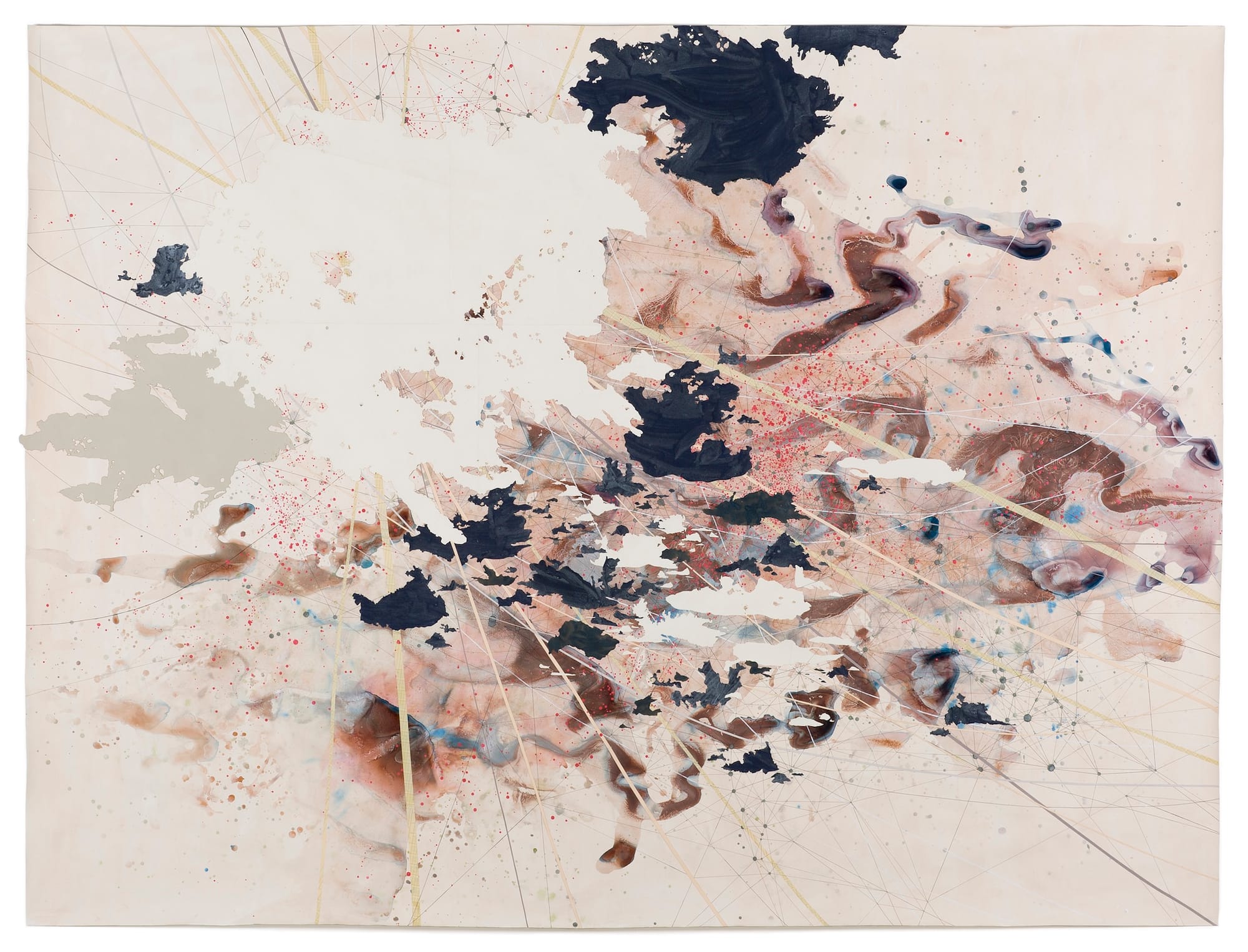
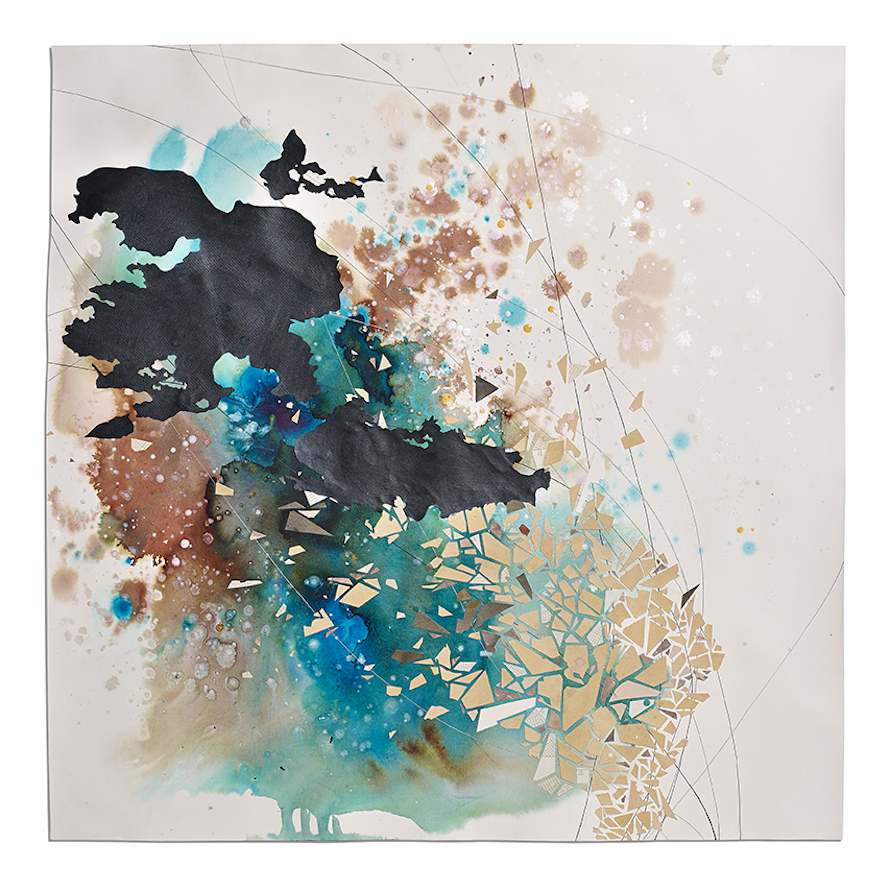
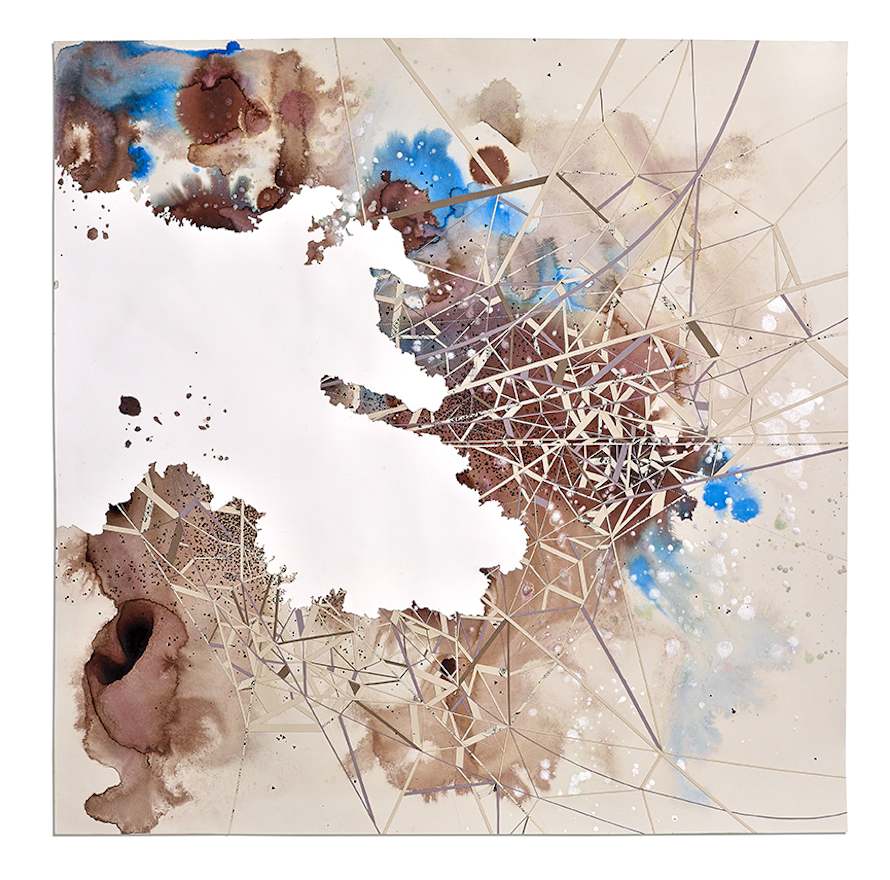
Interview continued
TMN: Is it difficult for you to transition from 2D to 3D?
VB: Yes and no. Moving from more two-dimensional work to installations was daunting, but the common thread was the material, the paper, which made it a natural, organic growth of my practice. Each type of work poses different challenges, but I think it has been healthy to get out of my comfort zone and work in space differently through installation. Both the installations and 2D work inform and influence each other, and that makes things more interesting for me.
TMN: When you work on an installation, how do you envision it? How much of the actual construction is spontaneous?
VB: An installation usually begins with an invitation to do something in a space, for an exhibition or commission. I visit the site and think about how to respond to it and how an installation can attach to the space, occupy part or all of it, and travel through it. So I guess it begins in my mind with a general feeling of the energy the piece will have. I’ll make a few rough sketches to help me think through how the installation can travel through the space. Then I begin generating the elements in my studio that will compose the installation. I used to always hand cut all the paper elements, but for the past two installations I’ve made, I’ve used a combination of hand cutting and laser cutting. I never use a computer. Even with this type of preparation I’ve described, there is always a great deal of spontaneity at work during the process of making the installation in the specific space. I come to know the space in a very particular and intimate way while working in it, and this informs my response. Sometimes, things I’ve planned do not work as I imagined, so I make adjustments in response to the actual space. It’s exciting and a bit daunting to not know exactly how things will turn out, but I’ve come to need and enjoy the challenge of not knowing.
TMN: What was the first piece of art you sold?
VB: The first piece of art I sold was a group of prints at a student sidewalk art sale while I was an undergrad at RISD. I was a junior, and it must have been the annual alumni weekend, with lots of parents and alumni milling around. I sold quite a few pieces. I was pretty broke at that time, and I remember feeling amazed and grateful that I had actually made some money!
TMN: How did the Facebook commission come about?
VB: Facebook has an Artist-in-Residence Program where their in-house curator invites artists to create site-specific works on their campus. He invited me to participate and accepted my proposal to make an installation in a two-story space below a skylight. I tried to do something that would be challenging and ambitious for me in scope, but also an authentic extension of my practice. Simultaneously I wanted the piece to be appropriate for the space and to engage the community who works there.
TMN: Can you pinpoint in your career when you found your voice?
VB: Going to grad school at California College of the Arts from 2004 to 2006 helped me find my voice and was a time of very accelerated growth. It gave me the time, space, focus, and the challenges from and good conversations with peers and mentors to push my practice forward. I made a lot of work that I was unsatisfied with, but I felt by the time I graduated that I had tapped into the core of what is important to me and what I need to say. I developed a meditative process and some material interests and methods that gave me more confidence in myself. I learned to trust myself more, and to actually hear my voice amidst all the noise.
TMN: What do you look for in a good television show?
VB: Great question! I have two very different ideas of what I like and think makes for a good television show. Also, disclaimer: I haven’t had a television in over a decade; I watch TV on the internet.
On the one hand, The Wire is one of my favorite shows ever, as is Six Feet Under. I like complex stories, great actors, some sort of emotional landscape that feels authentic, a compelling drama or mystery. On the complete opposite side of the spectrum, Project Runway and Top Chef are guilty pleasures. I appreciate the creativity and effort of the contestants and the measured critiques and mentorship of the judges.
TMN: Benjamin Franklin reportedly said, “I wake up every morning at nine and grab for the morning paper. Then I look at the obituary page. If my name is not on it, I get up.”
VB: I recently read Daily Rituals by Mason Currey, a book about the daily routines of artists, writers, and other creative types, including a bit about Benjamin Franklin, who had a daily ritual of sitting around naked in his room taking what he called “air baths.” It seems that Franklin had some extreme opinions about how one should live life.
I guess some people are motivated by the finite nature of life, and the desire to make something of it before it’s over, and I can’t argue with that. Making art is certainly a strategy for survival. I look at each day ahead with gratitude, filled with possibilities. I think that’s what Franklin was getting at—keep going.
